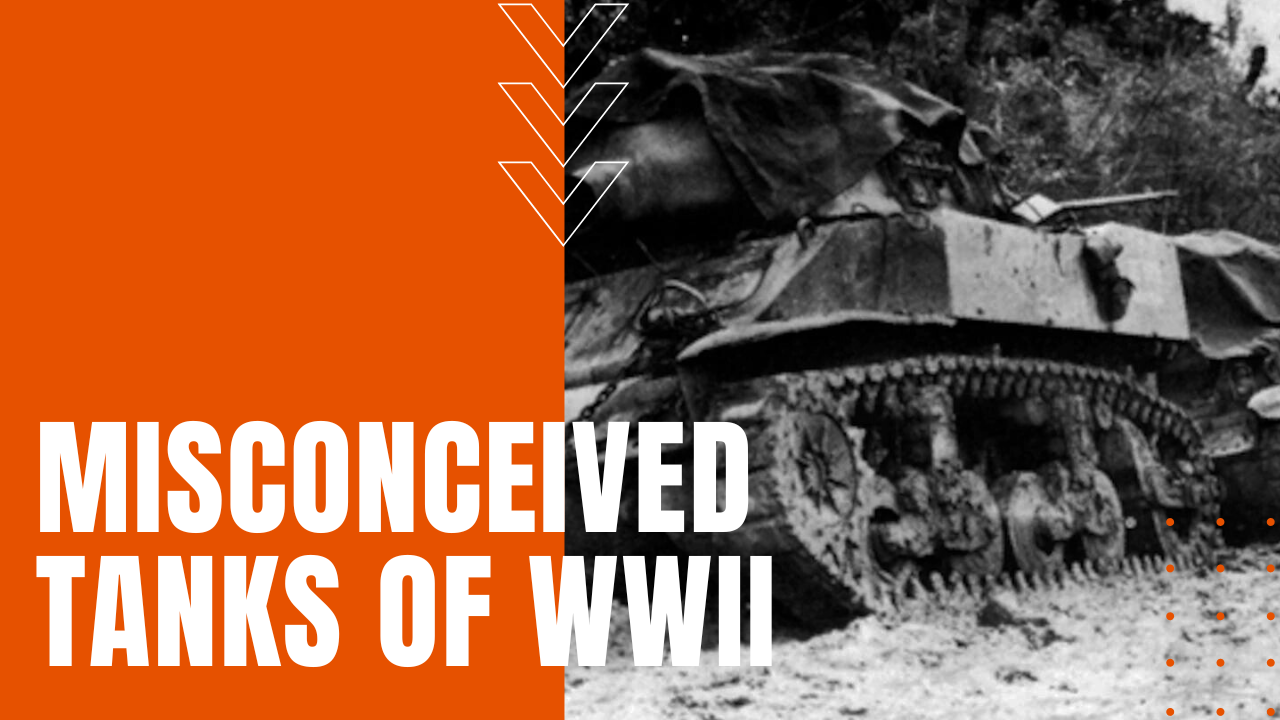Misconceived Tanks of WWII

After tanks made their debut during World War One’s Battle of the Somme, specialization soon refined tank design into light tanks for reconnaissance, heavily armored tanks for frontal assaults on a battlefield and fast cruiser tanks to exploit salients or bulges in an enemy’s frontline defenses, but as tank designs continued to evolve during the Second World War, massive failures plagued war designers on both sides of the conflict.
Porsche’s Fail
First and most notable was Ferdinand Porsche’s monstrosity nicknamed the Mouse in English or Maus in German, in response to Adolf Hitler’s call for an indestructible super tank, which weighed in at over 200 tons, compared to 68.5 tons for Germany’s king of the battlefield, the Tiger 2. After trials commenced in 1943, the Maus developed constant drivetrain problems, with a mere 12 miles per hour top speed due to its nearly ten-inch-thick armor.
Scraped After Two Prototypes
Only two prototypes were ever built, before the misconceived behemoth was finally scraped. Great Britain took second place in tank development fails, with its Covenanter Cruiser Tank, which looked promising during its 1939 design phase, with its oversized wheels, low profile and sleek armored lines. By the time it was ready for combat in 1941, its armament and light armor protection proved insufficient against enemy tanks of the Axis forces, while engine cooling problems made it unsustainable for effective use on the battlefield.
An Even Bigger Fail
Of the 1,771 Covenanter tanks produced, none was deployed in combat, instead finding their only role in training new tank crews. Last on the tank fail list was Britain’s second and third strike known as the TOG 1 & 2, which was the creation of the so called “Old Gang” of tank designers left over from World War One. Ignoring nearly every modern development in tank design, firepower and armor defenses, the Old Gang instead designed a machine to re-fight the First World War, producing the TOG 1, which was long, heavily armored and capable of crossing trenches and bomb cratered terrain no longer predominant in battlefield etiquette.
Plagued With Problems
Its steering and transmission systems proved to be unnecessarily complex and prone to breakdown. The TOG 2 was to follow, including a revolving turret and other much-needed improvements, however, both prototypes proved too awkward and overly-complicated to be green-lighted for combat by Great Britain’s War Office, making misconceived tank fails of World War Two, some of the biggest blunders in the age of mechanized warfare.
